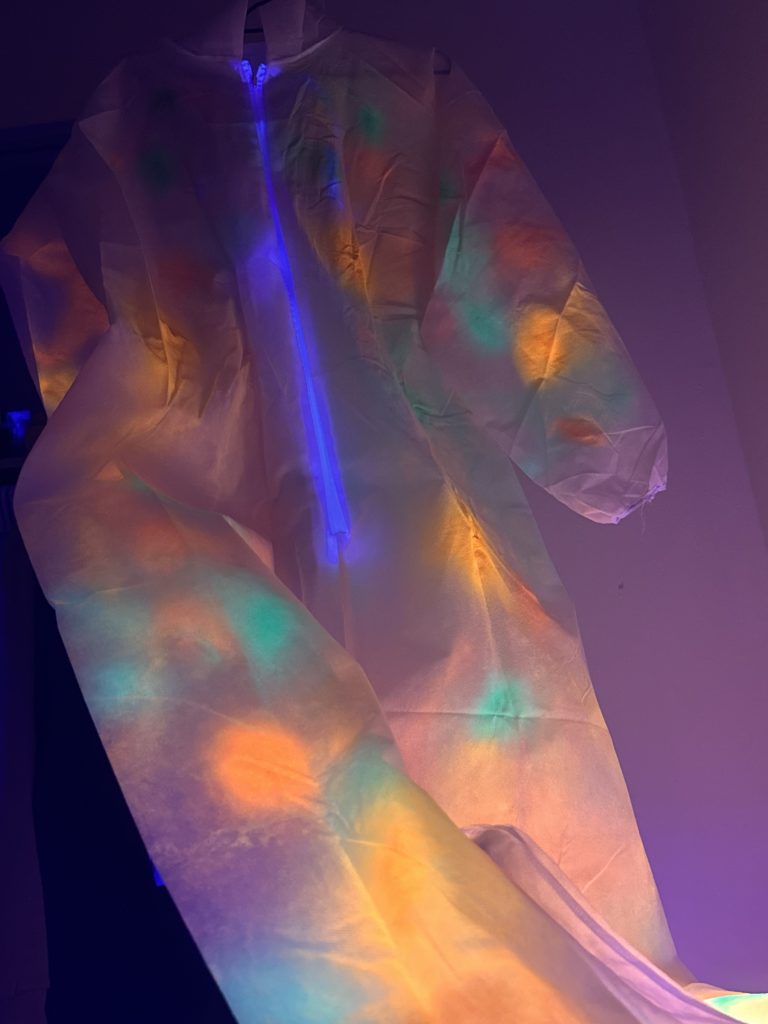
When planning a light project that involves glow-in-the-dark elements and ultraviolet (UV) lighting, there are several factors and challenges to consider, especially when using specific materials and technologies such as glow-in-the-dark paint, black lights, and Tyvek suits. Here’s an expanded look at how to approach such a project, considering the tools and challenges mentioned:
Glow-in-the-Dark Paint
Glow-in-the-dark paint absorbs light and then releases it slowly over time, creating a glowing effect in dark environments. This type of paint is typically phosphorescent and can be used on various surfaces
Challenge: Activation by UV Light
A common challenge with glow-in-the-dark spray paint is that it often requires activation by a strong light source before it will glow. UV light is particularly effective for this purpose. However, some users might expect these paints to glow without prior exposure to light or may not realize the intensity of light needed for activation.
Black Light (UV Light)
Black lights emit UV light, which is invisible to the naked eye but can cause certain materials to fluoresce or appear to glow in the dark.
Challenge: Dependence on Continuous UV Exposure
A significant limitation of relying on UV-reactive materials (including some glow-in-the-dark paints) is that their glowing effect is only visible under UV light. Once the UV light source is turned off, these materials will stop glowing. This dependence on continuous UV exposure can be a limitation for projects intended to glow independently of an external light source.
Tyvek Suit
Tyvek suits are made from high-density polyethylene fibers, offering a balance of protection, durability, and comfort. They are often used in industrial and artistic applications to protect the wearer from chemicals or paint overspray.
Application in Light Projects
For a project involving a Tyvek suit, applying glow-in-the-dark paint or UV-reactive paint can transform the suit into a glowing outfit under the right conditions (i.e., after exposure to UV light or in the presence of a black light).
Solutions and Considerations
- Pre-Activation: Ensure that glow-in-the-dark elements are adequately exposed to UV light before their intended display, allowing them to “charge” fully.
- Continuous UV Exposure: If continuous glowing is desired, consider integrating UV LED lights into the display or environment to keep UV-reactive elements illuminated.
- Material Testing: Conduct tests with various glow-in-the-dark and UV-reactive paints on Tyvek material to find the best combination for your project. Consider factors like brightness, longevity of the glow, and the effect of different wavelengths of UV light.
- Educating Viewers: If the project is meant for public display, provide information about how the technology works, including the need for UV light to activate and maintain the glowing effect. This can enhance the audience’s appreciation and understanding of the project.
